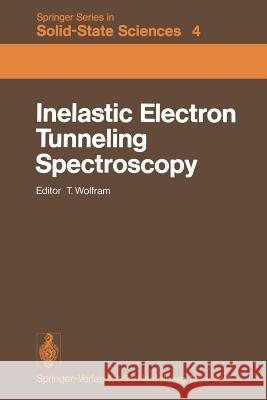Inelastic Electron Tunneling Spectroscopy: Proceedings of the International Conference, and Symposium on Electron Tunneling University of Missouri-Columbia, USA, May 25–27, 1977 » książka
Inelastic Electron Tunneling Spectroscopy: Proceedings of the International Conference, and Symposium on Electron Tunneling University of Missouri-Columbia, USA, May 25–27, 1977
ISBN-13: 9783642812309 / Angielski / Miękka / 2012 / 242 str.
Inelastic Electron Tunneling Spectroscopy: Proceedings of the International Conference, and Symposium on Electron Tunneling University of Missouri-Columbia, USA, May 25–27, 1977
ISBN-13: 9783642812309 / Angielski / Miękka / 2012 / 242 str.
(netto: 384,26 VAT: 5%)
Najniższa cena z 30 dni: 385,52 zł
ok. 22 dni roboczych
Bez gwarancji dostawy przed świętami
Darmowa dostawa!
Inelastic Electron Tunneling Spectroscop or lETS, provides a unique technique for electronically monitoring the vibrational modes of molecul (;5 adsorbed on a metal oxide surface. Since the discovery of the phenomena by JAKLEVIC and LM1BE in 1966, lETS has been developed by a number of scientists as a method for studying the surface chemistry of molecular species adsorbed on aluminum oxide. Recent applications of lETS include investigations of physical and chemical adsorption of hydrocarbons, studies of catalysis by metal particles, detection and identification of trace substances in air and water, and studies of biological molecules and electron damage to such molecules. lETS has been employed to investigate adhesive materials, and studies are currently in prog ress to investigate corrosion species and corrosion inhibitors on aluminum and its alloys. Electronic transitions of molecules have also been studied by lETS. The recent development of the "external doping" technique, whereby molecu lar species can be introduced into fabricated tunnel junctions, opens the door for a vast new array of surface chemical studies by lETS. lETS is rap idly becoming an important tool for the study of surface and interface phe nomena. In addition to its role in surface studies, inelastic tunneling has proved extremely valuable for the study of the electronic properties of thin metallic films, and the recent discovery of light emission from inelastic tunneling promises to be of some importance in the area of device physics."











